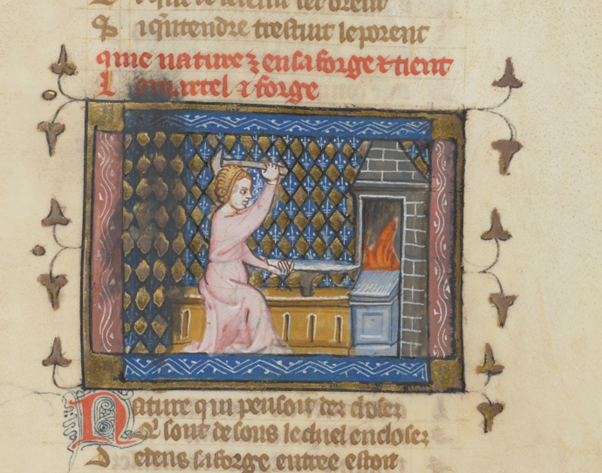A defrosted manuscript
A defrosted manuscript
Reading aloud is all the rage: whereas until recently it was mainly the domain of (young) children, audiobook apps such as Storytel, Nextory and Bookbeat now enjoy great popularity among all ages. In a way, these modern technologies take us back to the Middle Ages, when the literature and literary life of the European Middle Ages were public events and a collective experience. Fictional texts were not just meant to be read privately, but above all to be recited and listened to. In both the early and late Middle Ages, reading texts aloud by the fire, in the market or in a common room was a daily practice, with a peak on feast days.
The famous Middle French love poem Roman de la Rose (The Romance of the Rose) is an example of a text that was intended to be recited. Written in the second half of the 13th century, the poem is a love story in verse consisting of two parts. The first part, written by Guillaume de Lorris, comprises 4058 verses and can be described as a dream vision, an allegorical dream story in the tradition of courtly love, in which a courtier tries to woo his beloved in a walled garden or ‘locus amoenus.’ The work was completed by Jean de Meun, who added the second part of almost 18,000 verses. His approach to the theme was more philosophical and critical in nature, markedly different from the original work.
Manuscript MMW 10 B 29, from the collection of Huis van het boek, contains the entire text of the Roman de la Rose. The manuscript was produced in Paris around 1370. The following image shows an unfolded leaf from the manuscript, containing a miniature showing a personification of nature as a blacksmith.
The text accompanying the miniature runs like this:
“Nature, whose thoughts were focused on the things enclosed beneath the sky, had entered her forge, where she was concentrating all her efforts upon the forging of individual creatures to continue the species. For individuals give such life to species that, however much Death pursues them, she can never catch up with them.”

MMW 10 B 29, fol. 89v
‘Nature’ is depicted as a female blacksmith. As a blacksmith forges metal, so nature forges new life. In her hand she holds a hammer. A dark smudge is visible on the left side of the miniature, presumably caused by repeatedly swiping up and down the image with a finger. According to art historian Kate Rudy, it is plausible that a lector (a professional reader) rubbed the image during their performance in an attempt to mimic the movement of Nature with her hammer, thus bringing the image to life. The miniature of Nature as a blacksmith was enlarged, as it were, for the audience. The lector offered the audience not only an auditory sensation, by reading the story aloud, but also engaged them visually with this performance. Interacting with the manuscript may have allowed a lector to ‘unfreeze’ the images and enhance the engagement of the audience.
De vertaling van het tekstfragment in deze blog is van Malou Moen, gebaseerd op de vertaling van Horgan.
Oostrom, van, Frits. Wereld in woorden. Geschiedenis van de Nederlandse literatuur 1300-1400. Amsterdam: Bert Bakker, 2013.
Rudy, Kathryn M. ‘Fingers, Lips and Parchment: How Medieval Users Handled their Manuscripts.’ Inaugural Lecture, 30th October 2019, University of St. Andrews, St. Andrews, Scotland. https://www.youtube.com/watch?v=l3FYjWov0gM





